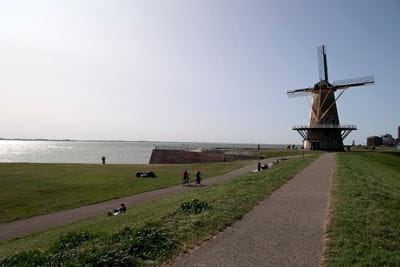Project Management
Construction project manager
Construction projects managers are the glue that holds together all the different parties on a wind farm construction project. By bringing everyone to the table on a regular basis, providing logistical and technical services, and making wind turbine foundations safe and accessible to contractors, our ultimate aim is to keep everything safe and well organised.
We’re there from the very beginning of a construction project, and we’re the last ones to hand it over to operations and maintenance when it’s finished. There are enough challenges to troubleshoot, so it never gets boring. Working closely with colleagues and contractors from every discipline and from all sorts of different backgrounds means we learn from each other every day.
Scope and change manager
On massive wind farm projects, plans sometimes change. As scope and change managers, we make sure that any possible deviations from the plan are recorded, communicated, and either approved or rejected. We also record and track the relationships between different work packages to make sure no work is duplicated and nothing is missed.
It’s fascinating to work with an overview of an entire project of this scale and cooperate with all the different stakeholders and package managers, along with other support functions.
Project planner
Being a project planner on an offshore wind project means seeing through every stage of construction, from development to installation to commissioning. We work with a huge range of colleagues and contractors to bring all the different scopes of the project into one overall time schedule, and to make sure all the relevant information is shared efficiently to support decision-making processes. We’re always on the lookout for potential challenges that might affect the schedule, so we can give early warnings and avoid delays.
It’s rewarding to work on projects of such a large scale and with such a high level of complexity and to work with so many different stakeholders. The tasks are always evolving, so the challenges we face each day are different.
Project manager
While external contractors carry out cable installations for our offshore wind projects, the contract is overseen by an Ørsted project manager. We ensure that the contractor has all the necessary data, that their engineering design, installation, and protection methodologies and vessels have been reviewed and found to be acceptable, and that their work fits within the project schedule. We also get the contractor to demonstrate their capabilities through training and mock-up trials.
Working with so many internal and external stakeholders to get a wind farm constructed in the best way involves a lot of problem solving, making sure everyone’s in agreement, and facilitating compromises between different parties. Getting everyone to work together is what makes the job so satisfying.






